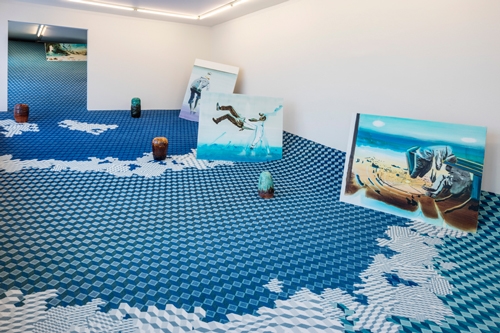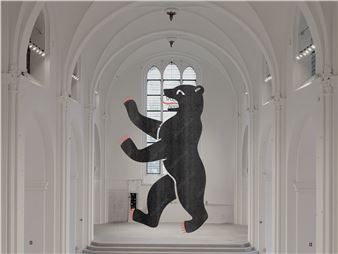John °Ă¸°ů˛Ô±đ°ů: Blue Bedroom
Bedrooms: perhaps the most curious of domestic spaces. In the end, the only thing that defines them is the presence of a bed. And this last is a space in which the average human being spends more than 30 percent of their life. It’s a space in which we feel the most safe and yet in which we are at our most exposed. Here, in John °Ă¸°ů˛Ô±đ°ů’s latest exhibition, there are five of them – the gallery becomes dormitory – their proportions articulating five individual presences (each bed representing a space for one body), each of which is presumably at some point (when asleep) totally unconscious of the presence of the others. The bedroom is a place in which people are at once present and absent, conscious or unconscious. More particularly, when the bedroom becomes a dormitory, the social set-up is rather like the experience of viewing an exhibition: you share an experience with other visitors but interpret that experience via thoughts that are (assuming a certain degree of self-determination and independence of texts such as this one) entirely personal and of your own; you’re invited to look at a specific object and be transported by thoughts and associations to somewhere else. Those are exactly the kind of contradictions upon which °Ă¸°ů˛Ô±đ°ů’s art thrives.

Recommended for you
Bedrooms: perhaps the most curious of domestic spaces. In the end, the only thing that defines them is the presence of a bed. And this last is a space in which the average human being spends more than 30 percent of their life. It’s a space in which we feel the most safe and yet in which we are at our most exposed. Here, in John °Ă¸°ů˛Ô±đ°ů’s latest exhibition, there are five of them – the gallery becomes dormitory – their proportions articulating five individual presences (each bed representing a space for one body), each of which is presumably at some point (when asleep) totally unconscious of the presence of the others. The bedroom is a place in which people are at once present and absent, conscious or unconscious. More particularly, when the bedroom becomes a dormitory, the social set-up is rather like the experience of viewing an exhibition: you share an experience with other visitors but interpret that experience via thoughts that are (assuming a certain degree of self-determination and independence of texts such as this one) entirely personal and of your own; you’re invited to look at a specific object and be transported by thoughts and associations to somewhere else. Those are exactly the kind of contradictions upon which °Ă¸°ů˛Ô±đ°ů’s art thrives.

 ARTISTS
ARTISTS
















